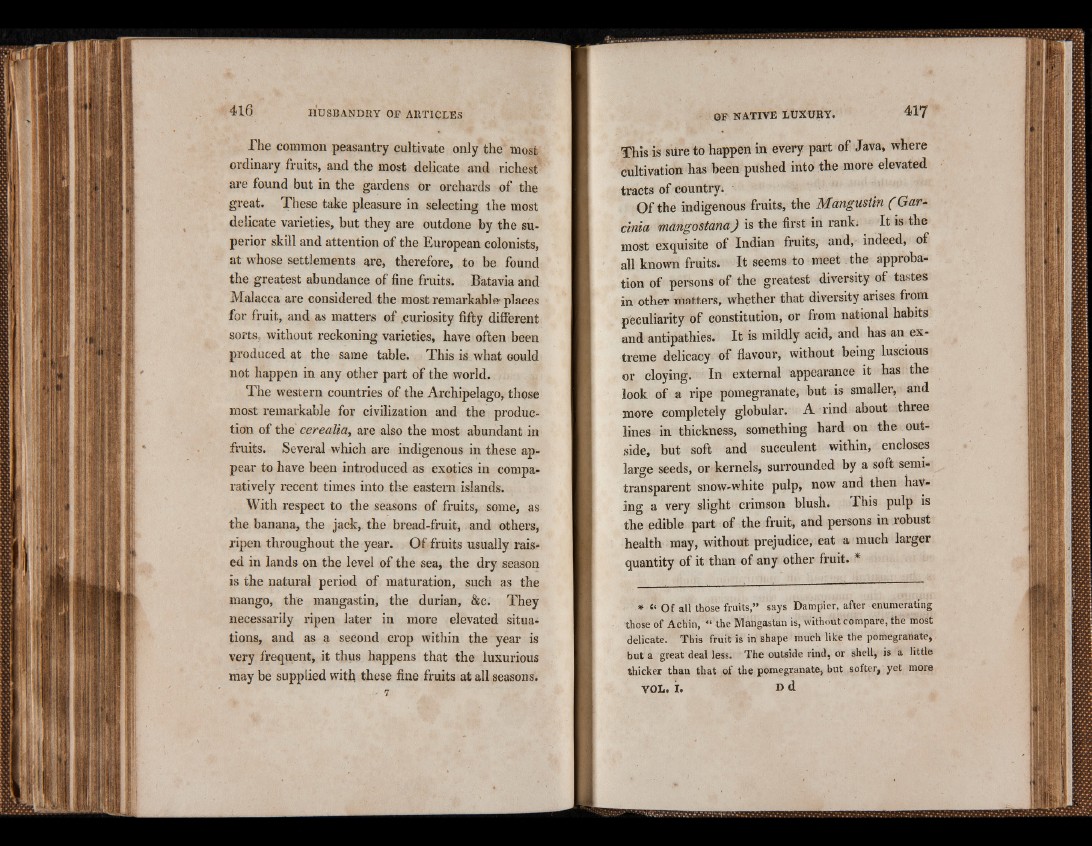
416 HU SBA N D R Y OF ARTICLES
The common peasantry cultivate only the most
ordinary fruits, and the most delicate and richest
are found but in the gardens or orchards of the
great. These take pleasure in selecting the most
delicate varieties, but they are outdone by the superior
skill and attention of the European colonists,
at whose settlements are, therefore, to be found
the greatest abundance of fine fruits. Batavia and
Malacca are considered the most remarkable-places
for fruit, and as matters of .curiosity fifty different
sorts, without reckoning varieties, have often been
produced at the same table. This is what oould
not happen in any other part of the world.
The western countries of the Archipelago, those
most remarkable for civilization and the production
of the cerealia, are also the most abundant in
fruits. Several which are indigenous in these appear
to have been introduced as exotics in comparatively
recent times into the eastern islands.
With respect to the seasons of fruits, some, as
the banana, the jack, the bread-fruit, and others,
ripen throughout the year. Of fruits usually raised
in lands on the level of the sea, the dry season
is the natural period of maturation, such as the
mango, the mangastin, the durian, &c. They
necessarily ripen later in more elevated situations,
and as a second crop within the year is
very frequent, it thus happens that the luxurious
may be supplied with these fine fruits at all seasons.
I 7
OF NATIVE LUXURY,
This is süre to happen in every part of Java, where
cultivation has been pushed into the more elevated
tracts of country.
Of the indigenous fruits, the Mangustin (Garcinia
mangostana) is the first in rank; It is the
most exquisite of Indian fruits, and, indeed, of
all known fruits. It seems to meet the approbation
of persons of the greatest diversity of tastes
in other matters, whether that diversity arises from
peculiarity of constitution, or from national habits
and antipathies. It is mildly acid, and has an extreme
delicacy of flavour, without being luscious
or cloying. In external appearance it has the
look of a ripe pomegranate, but is smaller, and
more completely globular. A rind about three
lines in thickness, something hard on the outside,
but soft and succulent within, encloses
large seeds, or kernels, surrounded by a soft semitransparent
snow-white pulp, now and then having
a very slight crimson blush. This pulp is
the edible part of the fruit, and persons in robust
health may, without prejudice, eat a much larger
quantity of it than of any other fruit. *
* “ Of all those fruits,” says Dampier, after enumerating
those of Achin, the Mangdstan is, without compare, the most
delicate. This fruit is in shape much like the pomegranate,
but a great deal less. The outside rind, or shell, is a little
thicker than that of the pomegranate, but softer, yet more
V O L . I . D d